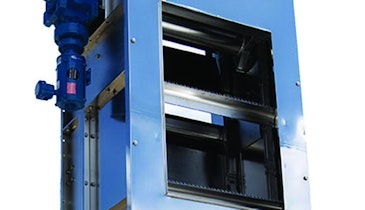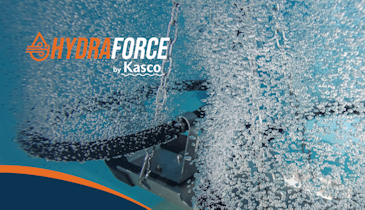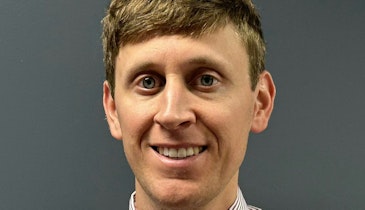Interested in Treatment?
Get Treatment articles, news and videos right in your inbox! Sign up now.
Treatment + Get AlertsDigester heater/heat exchanger maintenance is often overlooked and can lead to decreased performance and component failure. Routine maintenance is required to reduce potential for failure and to prevent downtime.
Below are four tips for keeping your Envirex heater/heat exchanger operating at peak performance.
1. Perform general routine maintenance
Routine maintenance is integral to long-lasting performance of mechanical components. At a minimum, the following should be performed on a monthly basis. These items can be completed in less than one hour and will ensure proper and safe operation of the unit.
- Grease blower bearings – There are two bearings supporting the blower shaft on top of the heater/heat exchanger. Both bearings should be greased on a monthly basis per the manufacturer’s recommendation. Always use high-temperature grease. Consult vendor data in the O&M manual provided with the equipment.
- Check blower belt(s) – Inspect belt(s) for signs of wear or deterioration. Belts that are frayed, cracked or broken should be replaced.
- Check each main gas line shut-off valve – Ensure gas shut-off valves are operating properly. These are an important safety device and must be checked regularly. Consult vendor data for testing procedures.
- Visual inspection for water leakage – Visually inspect the unit for water leakage. Water leakage can occur at any gasketed joint including sludge tubes, hand holes, waterback, etc. Once leaks are repaired, use touch-up paint to prevent corrosion.
2. Clean fire tubes and combustion chamber
Fireside corrosion during operation results from large quantities of sulfur usually present in digester gas. If flue gas temperature is not kept above approximately 300 degrees F or if the water bath temperature is not kept above 145 degrees F, water vapor present in the flue gas will condense and sulfur based acids will form, causing corrosion. The fireside of the fire tubes and combustion chamber should be brushed to remove all soot and deposits on a yearly basis or sooner as determined by operating conditions. Cleaning of the fire tubes and combustion chamber can be accomplished in one day, minimizing downtime for the heating process.
Firing heating boilers intermittently during the shutdown period is not recommended. If extended shutdown is necessary, refer to the operations manual supplied with the equipment for detailed procedure. Boiler tubes will give many years of service when properly maintained. If severe scale and/or corrosion are encountered, consider seeking the assistance of a boiler maintenance or water treatment specialist. Evoqua heater/heat exchanger specialists are available to inspect equipment and make recommendations for repair or rehabilitation.
3. Clean sludge tubes
Envirex heater/heat exchangers are designed with a liberal heating surface area to negate the effects of fouling, allowing longer operation intervals between sludge tube exterior cleaning. Sludge tubes should typically be removed from service to clean the exterior every three to four years. The condition of the boiler water is paramount to the duration of this interval. Boiler feed water should be treated as appropriate for local conditions. At a minimum the water should be slightly alkaline. If excessive amounts of make-up water are used on a regular basis, the exterior condition of the sludge tubes should be checked more frequently.
The interior of the sludge tubes will gradually become fouled. This can be compensated for by gradually raising the water bath operating temperature. When the operating temperature of the water bath reaches a maximum of 190 degrees F and the unit no longer meets the heating requirement needs, it is necessary to clean the interior of the sludge tubes. Sludge tubes remain in place and the water need not be drained from the unit to clean the interior. It is good practice to clean the interior of the sludge tubes on the same yearly basis as the fire tubes as this will ensure the highest efficiency of the overall unit.
4. Analyze flue gas
Flue gas should be analyzed at least once per year, at any time combustion irregularities exist or if fuel-air mixtures are changed, either in quantity or quality. Some potential problems that would indicate a need for analysis include: the unit not delivering desired heat transfer, sporadic flame as viewed from the furnace tube sight glass, or the flame not staying lit.
The analysis should be performed using a commercially available direct reading flue gas analyzer under conditions where the water bath temperature is between 160 degrees F and 180 degrees F. A well-performing system would meet the following performance criteria: combustion efficiency in excess of 80%, O2 reading of less than 5%, and CO reading of less than 1% or 0. The air damper settings and the gas flow should be adjusted until these readings are obtained. If the desired performance cannot be achieved, the unit will most likely need to be taken out of service for cleaning.
Safety warning: The primary hazards in maintenance of heaters/heat exchangers are related to the combustible digester and natural gas present in the system. The potential for fire and/or explosion is always present. In addition, inhalation of digester gas is hazardous as it can contain toxic components. Before any maintenance is performed, turn off and tag the main line disconnect to the equipment. Follow lock-out/tag-out procedures. Shut off and drain all gas lines.
Let Evoqua help maximize your plant's performance and save you money.






